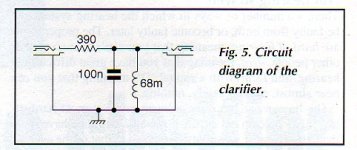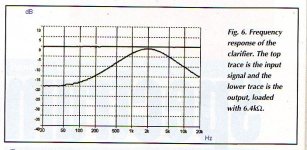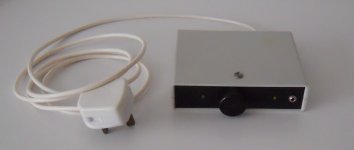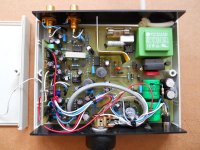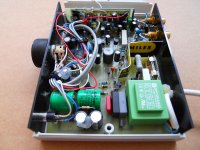As a new hearing aid user, can I clarify things a little. Its nothing to do with appearance or cussedness, but all to do with best results. Aids are definitely not perfect, and not easy to use, regardless of their cost. But expensive ones are better than cheap ones, as you would expect.
The better hearing aids help in most situations, but the ability to hear directionally does suffer to some extent, in all of them, despite manufacturers claims. Noisy situations and room echoes are problems, both of which headphones solve for TV.
However, with the aids turned on, and using phones, feedback and distortion then becomes problems.
Usually aids have a number of correction programs set by the audiologist. The skill of this person is critical in choosing settings for different circumstances. The first audiologist I had nearly resulted in me throwing away the aids. The second person sorted out all the problems and I now find then useful, but no more than that.
At least two and preferably more programs must be available to the wearer. However the wearer must also know (and be able to) which program to choose. Having done this, he must also be able to adjust the gain of the aid for best results. None of this is easy for an aged person, particularly those technologically challenged.Even after six months, I am still learning how best to use mine. So perseverance and study is necessary, and may people simply don't have the patience.
Good aids can therefore help, but modern tv's process the sound so much that clarity can still be an issue. Just compare studio newsreaders with hollywood films for clarity and you will know what I mean.
For any system, reducing the bass will improve speech clarity.
For those with severe high frequency hearing loss, best, quickest and easiest results for tv listening are obtained with no aids, and earphones with shaped response.
The better hearing aids help in most situations, but the ability to hear directionally does suffer to some extent, in all of them, despite manufacturers claims. Noisy situations and room echoes are problems, both of which headphones solve for TV.
However, with the aids turned on, and using phones, feedback and distortion then becomes problems.
Usually aids have a number of correction programs set by the audiologist. The skill of this person is critical in choosing settings for different circumstances. The first audiologist I had nearly resulted in me throwing away the aids. The second person sorted out all the problems and I now find then useful, but no more than that.
At least two and preferably more programs must be available to the wearer. However the wearer must also know (and be able to) which program to choose. Having done this, he must also be able to adjust the gain of the aid for best results. None of this is easy for an aged person, particularly those technologically challenged.Even after six months, I am still learning how best to use mine. So perseverance and study is necessary, and may people simply don't have the patience.
Good aids can therefore help, but modern tv's process the sound so much that clarity can still be an issue. Just compare studio newsreaders with hollywood films for clarity and you will know what I mean.
For any system, reducing the bass will improve speech clarity.
For those with severe high frequency hearing loss, best, quickest and easiest results for tv listening are obtained with no aids, and earphones with shaped response.
Well here is the beastie.
I used the circuit as part of a headphone amp which ended up quite complex. Audio is detected by an ultra low power opamp detector and resetable timer that triggers an opto coupled triac to switch the mains to power the device. All that is fed from a nicad cell. When mains appears that takes over via diode gating and charges the cell. The "stand up" board along the edge is a "capacitive" touch switch to a pad on the top of the case to provide a mute function.
The quality of the coil is important, you want one with as low a DC resistance as possible to give the best "Q" but it's a case of try what you have and alter to suit.
Credit for the LCR circuit to John Woodgate.
I used the circuit as part of a headphone amp which ended up quite complex. Audio is detected by an ultra low power opamp detector and resetable timer that triggers an opto coupled triac to switch the mains to power the device. All that is fed from a nicad cell. When mains appears that takes over via diode gating and charges the cell. The "stand up" board along the edge is a "capacitive" touch switch to a pad on the top of the case to provide a mute function.
The quality of the coil is important, you want one with as low a DC resistance as possible to give the best "Q" but it's a case of try what you have and alter to suit.
Credit for the LCR circuit to John Woodgate.
Attachments
for speech intelligibility the required bandwidth is ~300Hz to 3000Hz.
It sort of reproduces a form of music but not as we know it.
If only that bandwidth is amplified and fed to the nearfield speakers and/or headphones then the drivers and amplifiers will have a much easier time coping with that narrow band audio signal.
It sort of reproduces a form of music but not as we know it.
If only that bandwidth is amplified and fed to the nearfield speakers and/or headphones then the drivers and amplifiers will have a much easier time coping with that narrow band audio signal.
In my early days as a repair tech a common complaint among older folk was "poor sound".
I well remember one such incident, an old ITT KB TV set that actually was one of the better ones for audio quality in those days. Big speaker and a "rich" full tone... and the guy kept saying he couldn't hear it. So I ended up going round.
The set wasn't faulty at all of course, and I fitted a 10uf or something (can't remember now) cap in series with the speaker.
Wonderful was the reply... why could nobody else find the fault he said
I well remember one such incident, an old ITT KB TV set that actually was one of the better ones for audio quality in those days. Big speaker and a "rich" full tone... and the guy kept saying he couldn't hear it. So I ended up going round.
The set wasn't faulty at all of course, and I fitted a 10uf or something (can't remember now) cap in series with the speaker.
Wonderful was the reply... why could nobody else find the fault he said
This is similar but has a dc resistance of 220 ohm. As mentioned, try what's available and alter R and C to suit.
Check your pm's too
MURATA POWER SOLUTIONS|22R686|INDUCTOR, 68MH | CPC
Check your pm's too
MURATA POWER SOLUTIONS|22R686|INDUCTOR, 68MH | CPC
for speech intelligibility the required bandwidth is ~300Hz to 3000Hz.
That's where the majority of speech resides but the most important part is in the 3K to 6 Khz range where the soft F,S, & P sounds reside. Without the ability to hear consonants well in that frequency range, you'll be lucky to understand 50% of a conversation.
Don
However, with the aids turned on, and using phones, feedback and distortion then becomes problems.
.
I've been using Senheiser wireless headphones for TV and they do help a lot.
Using the the T-coil function on my hearing aids is even better. You just need to build a little 10 to 20 watt chip amp and run a loop of 18Ga. speaker wire around the perimeter of the listening area. The audio goes directly to your hearing aids where it's EQ'd to your loss. It doesn't get much better than that.
If you look around this page, you will find instructions on how to build a loop system or you can buy one.
Univox DLS-50 Home Loop System
Don
- Status
- This old topic is closed. If you want to reopen this topic, contact a moderator using the "Report Post" button.
- Home
- Amplifiers
- Solid State
- Advice for hearing impaired setup on a new television?
